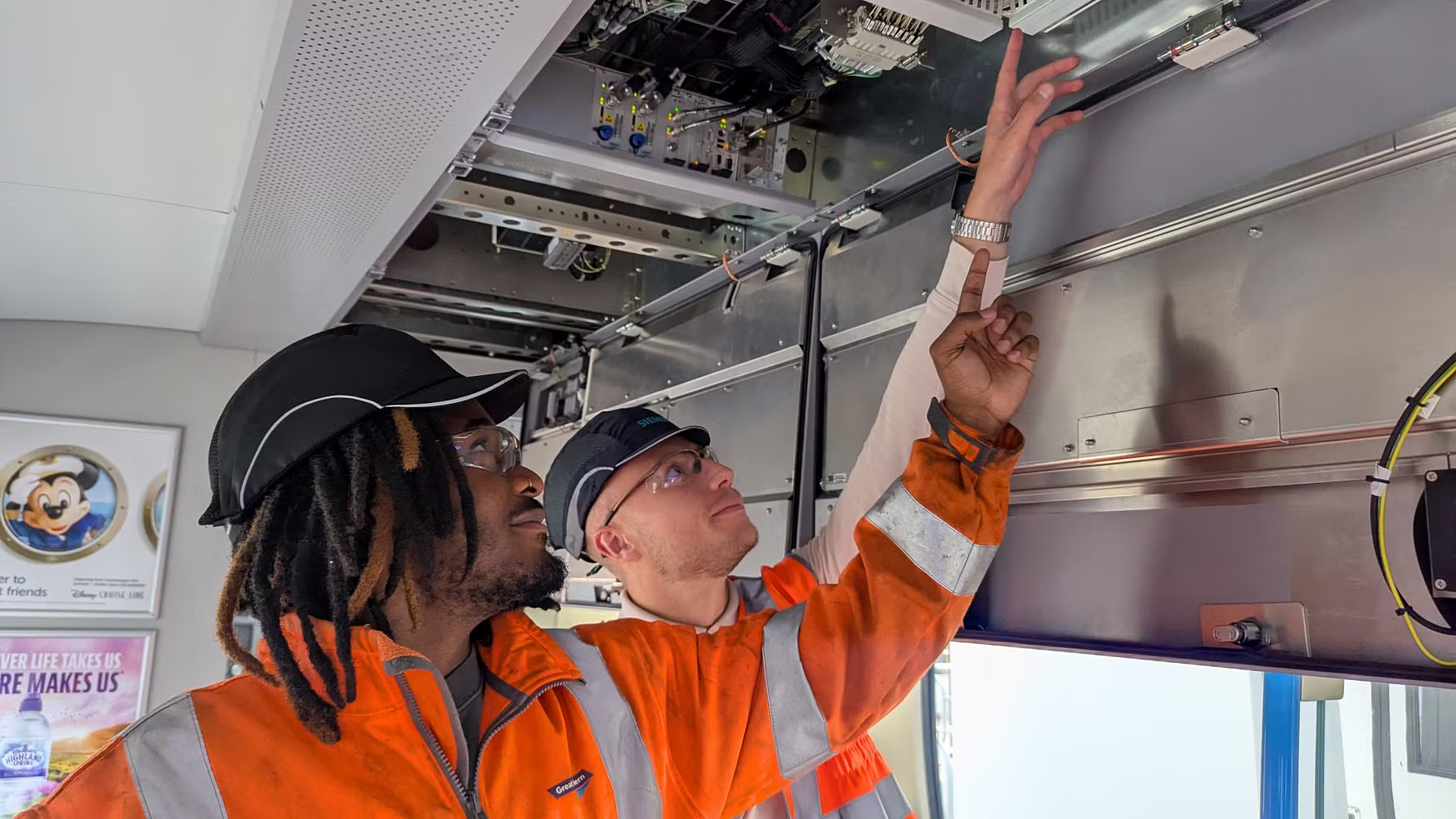Benchmarking ERTMS implementations
Posted: 15 May 2009 | | No comments yet
Details of the ERTMS Benchmark project which was launched with the objective of providing UIC members with a methodology and framework for an international economic evaluation and benchmark of ERTMS implementations.
Details of the ERTMS Benchmark project which was launched with the objective of providing UIC members with a methodology and framework for an international economic evaluation and benchmark of ERTMS implementations.
The ERTMS Benchmark project was launched in March 2008 by the UIC ERTMS Platform, with the objective of providing UIC members with a methodology and framework for an international economic evaluation and benchmark of ERTMS implementations, based on a life cycle model.
The Platform main objective is strongly focused on the development of managerial and technical strategies to foster a viable migration for ERTMS, compliant with the whole railway sector interests. The interchange of information between its Members and sharing of feedback from the current implementations are ongoing activities that, together with the dissemination of national implementation plans and strategies, form an essential part of each Platform meeting.
Prior to the benchmark development, the situation regarding economic evaluations of ERTMS implementations using a common European methodology was unsatisfactory and there was no working group in place at UIC level. Consequently, there was no common view of the system cost description of ERTMS implementations or the definition of subsystems and system components to be analysed as part of an economic evaluation. This situation has led to a lack of understanding of cost drivers at European level and by extension impeded the objective of reducing future implementation costs.
The costs of the new European ATC system are key factors in facilitating migration and implementation throughout Europe. UIC has accompanied developments in the field of ERTMS since the beginning, and has retained a stake in the system implementation. An overall system view is essential in order to consolidate the considerations of Infrastructure Managers and Railway Undertakings and develop optimised migration strategies.
The exchange of information at European level in order to increase transparency on the market together with the creation of a network of experts in the field of ERTMS economic evaluation will strengthen the position of the railways on the market.
There is little doubt that ERTMS will become the natural choice for future train control and communications systems in many other parts of the world as well as in Europe. The manufacturers are geared up to producing the equipment and there may be little alternative choice if a cab signalling system with full ATP (Automatic Train Protection) is required.
There will be continuing pressures to reduce deployment costs. Migration options that do not demand early investment in equipment that then lies dormant, will be highly desired. There will be increasing demand for cheaper forms of ERTMS for secondary lines and the Swiss and Swedes will lead the way on these. Equipment costs will be subject to competitive tendering and this should ensure that prices reflect the true cost of production plus the usual recovery of overheads and profit.
Particular issues of concern to the railways arising form the approach to ERTMS up to now are:
- The need to change signalling installations with serviceable lifetime left to be able to secure the implementation of ERTMS and its dependent subsystems
- The ongoing need to support mixed-mode operation of train with and without ERTMS and its dependent subsystems in the course of migration
- Lack of specification for the structure of the signalling system outside of ERTMS and its associated subsystems
- Problems of availability of products in scaleable forms which can be deployed to the different types of lines within the various member states
A first step towards a better cost understanding shall be via the UIC ERTMS Benchmark project. Twenty-one UIC members (IMs and RUs), five experts from the UIC ERTMS Team and two independent experts (PMP) worked intensively between March and September 2008 to prepare the fundamental basis for a future cost and performance benchmark of ERTMS implementations.
The commonly held perception is that ERTMS with its two main components (ETCS and GSM-R) has high initial costs – track side and on-board – but in the longer term, the ‘whole life cycle’ cost will be cheaper when compared to a current proprietary signalling system. A further assertion is made that with the advent of ETCS Level 3 technology, significant savings over conventional signalling systems will be possible.
The question remains as to how true this perception is? Precise answers to date are not available and UIC has taken up the challenge of providing its members with a benchmark analysis of the current economic and financial impacts of ERTMS implementation projects.
Benchmarking in Railway Infrastructure Management has already proved to be a valuable tool for mutual learning and for tracking progress over time. One example is the UIC Lasting Infrastructure Cost Benchmarking Group that set up a common framework of comparable railway infrastructure indicators 10 years ago. It has been found that different levels of cost efficiency exist throughout Europe and each of the participants carried out their own analysis and developed ideas on how to improve in their respective contexts.
To be able to benchmark costs and performance indicators of ERTMS implementation projects, a certain number of subjects need to be discussed and some methodological questions need to be addressed to the ERTMS experts participating in this benchmark project.
Our clear objective is to agree upon a common system definition that allows us to set up a framework of modular cost structures and key performance indicators in order to be able to evaluate a number of ERTMS implementation projects and analyse the results in a transparent way.
The output of this benchmark project will lead to an evaluation of the potential for future improvements like lower costs and/or better performances of railway infrastructure managers and railway undertakings.
ERTMS, the European Railway Traffic Management System, is an EU ‘major European industrial project’ to enhance cross-border interoperability and signalling procurement by creating a single Europe-wide standard for railway signalling with the final aim of improving the competitiveness of the rail sector.
ERTMS has three basic components, which are:
- ETCS, the European Train Control System, is a unified European track-to-train transmission-based train driving supervision system. It makes it possible not only to transmit permitted speed information to the train driver at each point on the line and control train running, but also to continuously monitor the driver’s compliance with these instructions
- GSM-R, Global System for Mobile communication for Railways is based on standard GSM but using various frequencies specific to rail as well as certain advanced functions. It is the radio system used for exchanging voice and data information between the track and the train. One part (communication channels for signalling data transmission) of the GSM-R system can be dedicated to the ERTMS/ETCS functionalities
- ETML, the operation management layer intended to optimise train movements by the ‘intelligent’ interpretation of timetables and train running data. It involves the improvement of: real-time train management and route planning – rail node fluidity – customer and operating staff information
The major results achieved so far by the UIC working group are as follows:
- Development of a common understanding of the system definitions, subsystems and related cost elements
- Definition of the initial benchmark structure:
- Modular cost structures for three benchmark pools (ERTMS/ETCS Level 1 trackside – ERTMS/ETCS Level 2 trackside implementations and ERTMS on-board equipment
- List of Key Performance Indicators
- Validation of the theoretical framework developed for the benchmarks via examination of two separate case studies:
- ERTMS/ETCS Level 2: ‘Betuwe Route – ProRail’
- ERTMS on-board: ‘To equip 20 TRAXX locos – SBB’
- Agreement on how to treat confidential data: ‘Non-disclosure and Confidentiality Agreement’ signed between UIC and its members
It is intended that the current ‘Cost Model’ (latest version) will become a standard ERTMS cost frame to be used for procurement purposes in the future.
With the UIC ERTMS Benchmark project, a methodology and standard cost framework have been defined for an international economic assessment of ERTMS implementations using a life cycle approach and Key Performance factors. On the infrastructure side a first test campaign for data collection was conducted in cooperation with Prorail for the ERTMS installation on the Betuwe freight line. On the rolling stock side, the procurement of 20 Swiss locomotives of the TRAXX family (class Re 482) was analysed in close cooperation with SBB.
The ‘Final Project Report 2008′ was delivered in November 2008. This paper shows how the UIC ERTMS Platform approached this complex subject, the difficulties it faced during its work on the various issues and the major results achieved.
Over the last few years, Life Cycle Costing (LCC) has become one of the leading economic topics in a wide range of industries with a view to sustainable cost reduction and optimisation of the management of infrastructure assets. A number of European research and development projects are currently addressing subjects relating to railway asset management, seeking to reduce LCC while improving RAMS characteristics (Reliability, Availability, Maintainability and Safety).
Life Cycle Costing consists of an economic analysis process designed to assess the total cost of acquisition, ownership and disposal of a product. Its primary goal is to provide input for decision making at any or all phases of a product’s life cycle. The policies of the different member states in terms of subsidies also have a considerable impact on the total costs of ownership.
There are four major phases in a product’s life cycle:
- Research and development
- Investment
- Operation and maintenance (including modification)
- Phase-out and disposal
The project has now reached an important milestone and a ‘critical mass of information’ is to be reached in order to be in a position to carry out cost comparisons and to draw conclusions from the potential cost differences across Europe, as well as to develop a complete benchmark study on ERTMS implementations (track side and on-board) – confidential commercial data can only be published anonymously.
It is planned to systematically analyse further cases in Europe and worldwide in 2009. Comparing information on costs will enable the railway sector to understand cost drivers and achieve future cost reductions. The ultimate objective is not to collect and analyse data from the railways in order to identify the ‘star pupil’, rather it is to draw preliminary conclusions from these comparisons in order to better understand the causes of specific cost situations and discuss future technological and economic improvements.
During the project development, Signalling Equivalent Unit (SEU) concepts have been analysed. SEU concepts have been introduced by railway infrastructure managers in order to enable the effective measurement and analysis of efficiencies of signalling renewals and investments. They are models used by signalling engineers and economic experts for budget estimations. As for all models, the SEU concept is used for generic and high level estimation and it cannot describe in detail the complex reality of a signalling implementation project.
The current way of analysing investment of ERTMS projects, by using existing cost ratios that build on pure infrastructure parameters such as length of line (k€/km), was felt not accurate enough and it was considered more appropriate to use SEU concepts. ERTMS represents a form of re-signalling and therefore costs should be put into relation to signalling elements and not physical infrastructure parameters such as km of line. This is why the working group started to design a uniform and international SEU concept compliant with the ERTMS environment.
Four Infrastructure Managers (DB, JBV, Network Rail and Pro Rail) have pioneered this field describing and challenging their SEU models to the rail community. They developed a new model to be agreed and used for the benchmark evaluation.
Final results of the benchmark project will be available at the end of the 2009.
Stay Connected with Global Railway Review — Subscribe for Free!
Get exclusive access to the latest rail industry insights from Global Railway Review — all tailored to your interests.
✅ Expert-Led Webinars – Gain insights from global industry leaders
✅ Weekly News & Reports – Rail project updates, thought leadership, and exclusive interviews
✅ Partner Innovations – Discover cutting-edge rail technologies
✅ Print/Digital Magazine – Enjoy two in-depth issues per year, packed with expert content
Choose the updates that matter most to you. Sign up now to stay informed, inspired, and connected — all for free!
Thank you for being part of our community. Let’s keep shaping the future of rail together!







